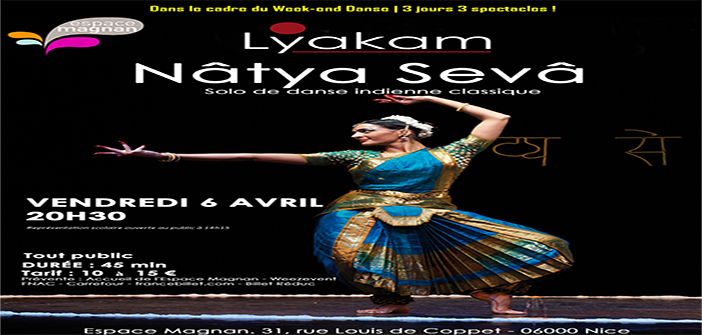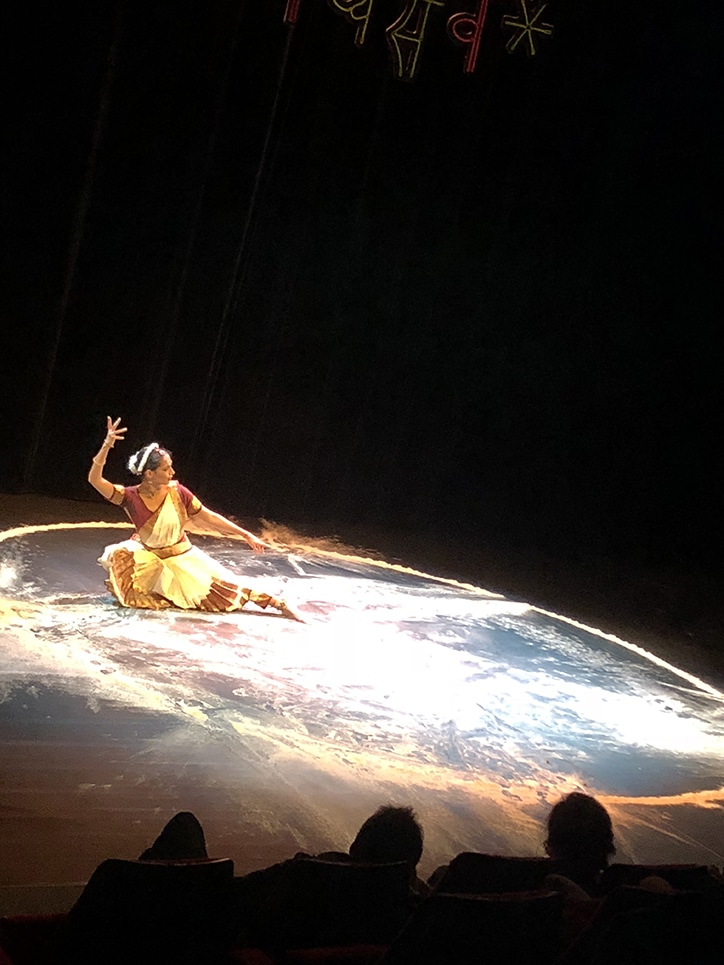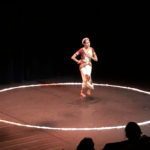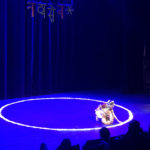L’Espace Magnan presented the dancer Jessie Veeratherapillay, of Indian and French origin, and her show entitled Nâtya Sevâ, in Sanskrit “Homage to Theater,” a solo of Bharata Natya – or Indian Theater – alternating elaborate rhythmic sequences and theatrical compositions in reference to Hindu mythology.
Traditional Indian Dance Show
During this show, there were three feelings from Hindu mythology:
- the feelings of a heroine overwhelmed by love
- the maternal feeling
- the emotional love feeling.
–
It was in India, over many years, that her dance masters imparted this knowledge to her and bequeathed to her a traditional repertoire, from which she drew some compositions to create the recital with this form, precise orders, and a part of improvisation.
For the recital at the Espace Magnan, it was upon returning from her journey to India with a few compositions that she selected five panels to share the culture of India and show various emotions to the visitors.
The Styles of Classical Indian Dance
There are 8 styles of classical Indian dances which are called “the total theater,” as it encompasses narration with gestures and rhythmic sequence with footwork and the dance itself is entitled “Bharata Natyam,” and India is also referred to as “the land of the land of acts.”
The syllables inscribed echo the title of the show “Nâtya Sevâ,” meaning “Homage to the total theater,” with the star evoking a stellar dimension where divine speech is of celestial origin.
There is this very angular aspect of the dance that recalls the geometry of the constellation, and the poets of southern India say their poems appeared as a gift from the heavens.
The white circle is a representation of the cycle of life, highlighting cyclical and cosmic relationships. It also pays tribute to Indian philosophy through this dimension of the cycle and creates a play space or an arena that one dares to cross, so there are boundaries.
A show full of emotion and energies that the dancer and spectators greatly appreciated.







